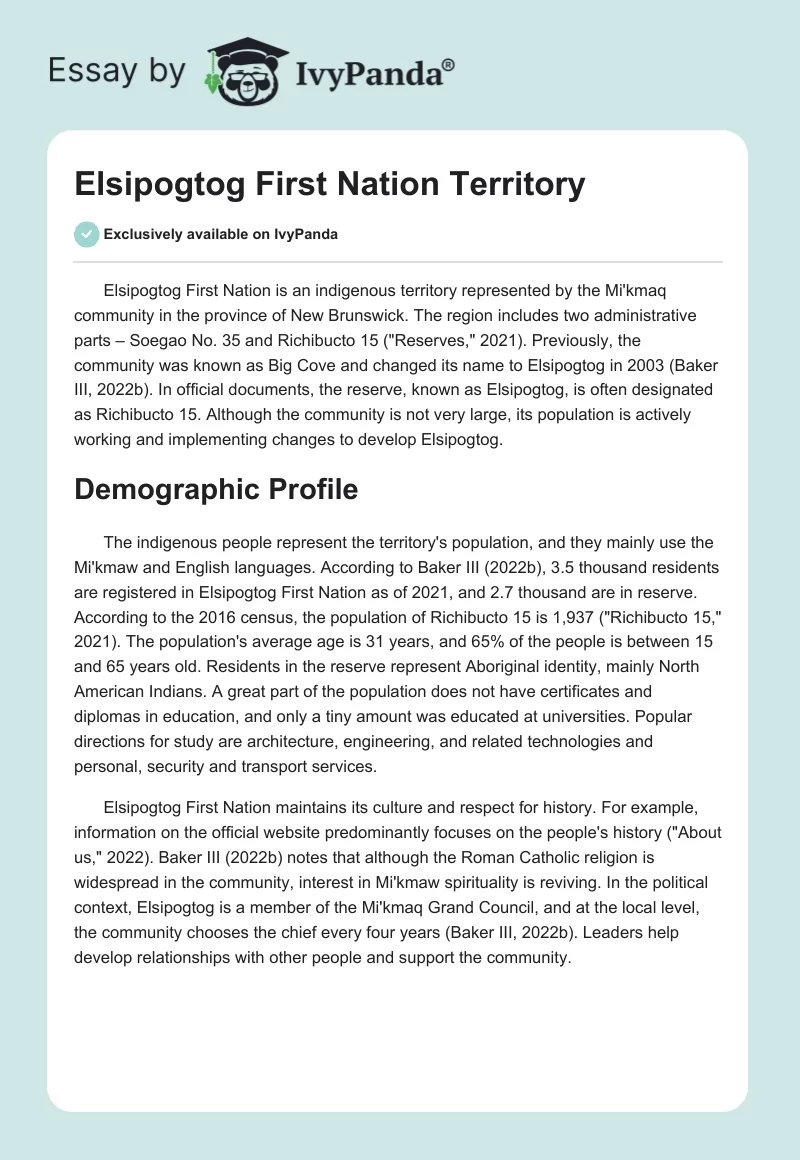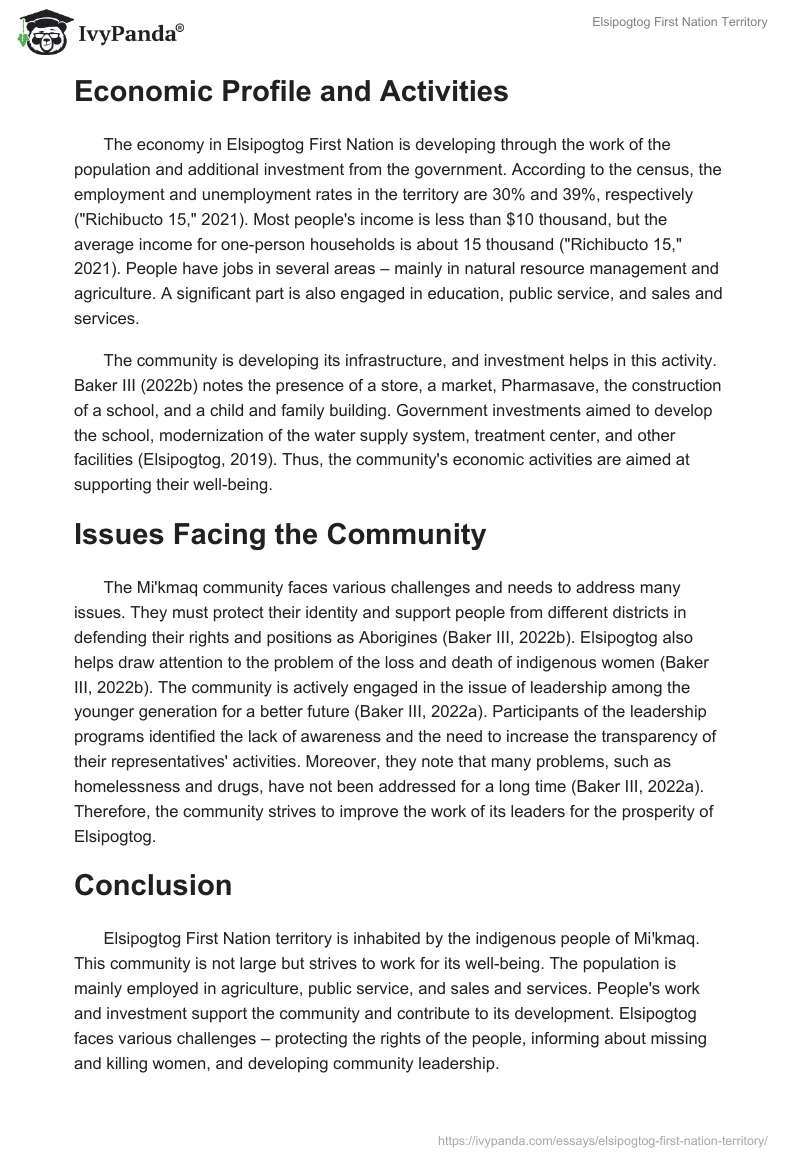Elsipogtog First Nation is an indigenous territory represented by the Mi’kmaq community in the province of New Brunswick. The region includes two administrative parts – Soegao No. 35 and Richibucto 15 (“Reserves,” 2021). Previously, the community was known as Big Cove and changed its name to Elsipogtog in 2003 (Baker III, 2022b). In official documents, the reserve, known as Elsipogtog, is often designated as Richibucto 15. Although the community is not very large, its population is actively working and implementing changes to develop Elsipogtog.
Demographic Profile
The indigenous people represent the territory’s population, and they mainly use the Mi’kmaw and English languages. According to Baker III (2022b), 3.5 thousand residents are registered in Elsipogtog First Nation as of 2021, and 2.7 thousand are in reserve. According to the 2016 census, the population of Richibucto 15 is 1,937 (“Richibucto 15,” 2021). The population’s average age is 31 years, and 65% of the people is between 15 and 65 years old. Residents in the reserve represent Aboriginal identity, mainly North American Indians. A great part of the population does not have certificates and diplomas in education, and only a tiny amount was educated at universities. Popular directions for study are architecture, engineering, and related technologies and personal, security and transport services.
Elsipogtog First Nation maintains its culture and respect for history. For example, information on the official website predominantly focuses on the people’s history (“About us,” 2022). Baker III (2022b) notes that although the Roman Catholic religion is widespread in the community, interest in Mi’kmaw spirituality is reviving. In the political context, Elsipogtog is a member of the Mi’kmaq Grand Council, and at the local level, the community chooses the chief every four years (Baker III, 2022b). Leaders help develop relationships with other people and support the community.
Economic Profile and Activities
The economy in Elsipogtog First Nation is developing through the work of the population and additional investment from the government. According to the census, the employment and unemployment rates in the territory are 30% and 39%, respectively (“Richibucto 15,” 2021). Most people’s income is less than $10 thousand, but the average income for one-person households is about 15 thousand (“Richibucto 15,” 2021). People have jobs in several areas – mainly in natural resource management and agriculture. A significant part is also engaged in education, public service, and sales and services.
The community is developing its infrastructure, and investment helps in this activity. Baker III (2022b) notes the presence of a store, a market, Pharmasave, the construction of a school, and a child and family building. Government investments aimed to develop the school, modernization of the water supply system, treatment center, and other facilities (Elsipogtog, 2019). Thus, the community’s economic activities are aimed at supporting their well-being.
Issues Facing the Community
The Mi’kmaq community faces various challenges and needs to address many issues. They must protect their identity and support people from different districts in defending their rights and positions as Aborigines (Baker III, 2022b). Elsipogtog also helps draw attention to the problem of the loss and death of indigenous women (Baker III, 2022b). The community is actively engaged in the issue of leadership among the younger generation for a better future (Baker III, 2022a). Participants of the leadership programs identified the lack of awareness and the need to increase the transparency of their representatives’ activities. Moreover, they note that many problems, such as homelessness and drugs, have not been addressed for a long time (Baker III, 2022a). Therefore, the community strives to improve the work of its leaders for the prosperity of Elsipogtog.
Conclusion
Elsipogtog First Nation territory is inhabited by the indigenous people of Miꞌkmaq. This community is not large but strives to work for its well-being. The population is mainly employed in agriculture, public service, and sales and services. People’s work and investment support the community and contribute to its development. Elsipogtog faces various challenges – protecting the rights of the people, informing about missing and killing women, and developing community leadership.
References
About us. (2022). Elsipogtog First Nation.
Baker III, O. (2022a). Elsipogtog youth group aims to develop future community leaders.CBC News.
Baker III, O. (2022b).Elsipogtog First Nation. The Canadian Encyclopedia.
Elsipogtog First Nation to benefit from new school, water system upgrades and other infrastructure and economic development projects. (2019). Canadian Statistics.
Reserves/settlements/villages. (2021). Canadian Statistics.
Richibucto 15, Indian reserve [Census subdivision], New Brunswick and Kent, County [Census division], New Brunswick. Census Profile, 2016 Census. (2021). Canada Statistics.


